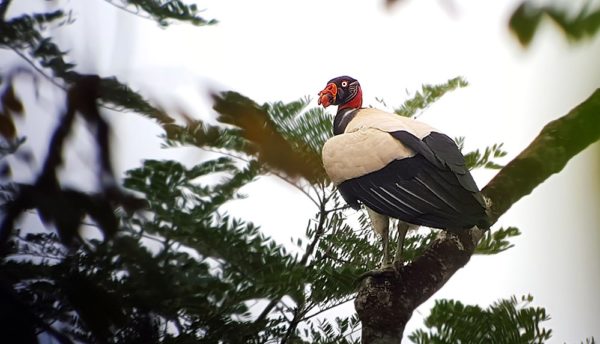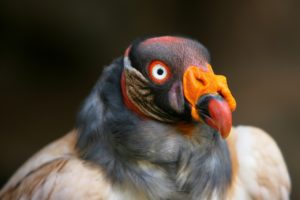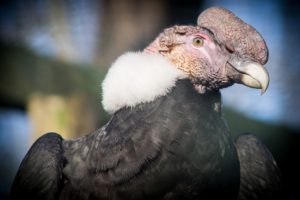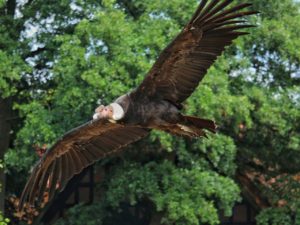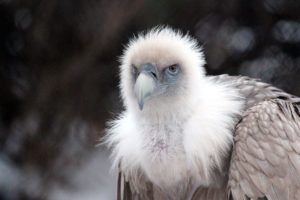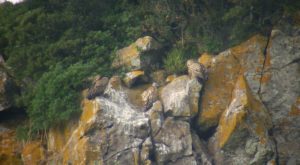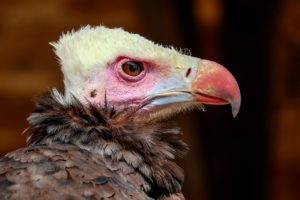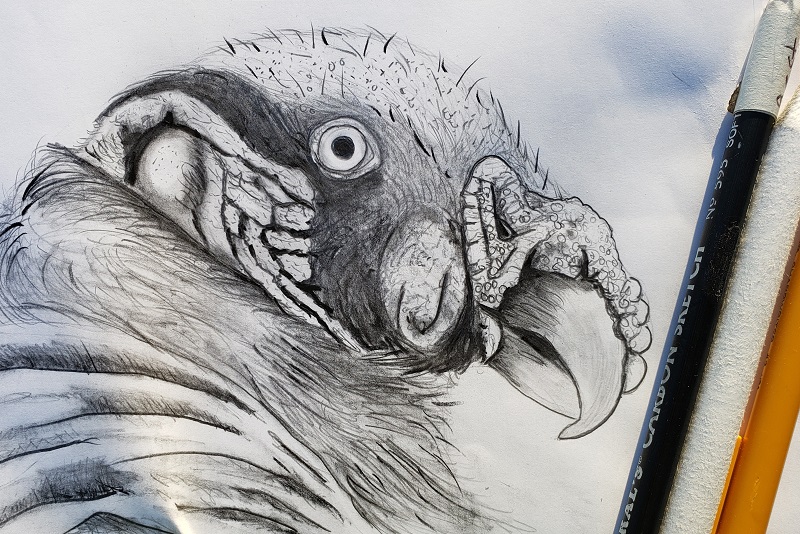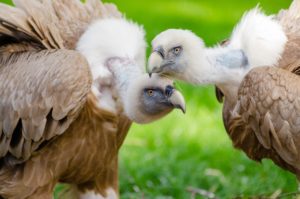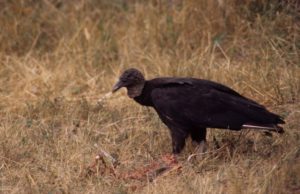International Vulture Awareness Day
The first Saturday in September is set aside annually to observe International Vulture Awareness Day. So I’d like to share some fascinating facts about these much-maligned but vitally important birds and showcase some of my favorite species from around the globe.
What is a Vulture?
The word ‘vulture’ refers to two groups of distantly related birds that share similar lifestyles. The New World vultures belong to the Cathartidae family and include just 7 species; the most familiar in North America is the California Condor.
The second group of vultures resides in Africa and Asia and belong to several genera within the Accipitridae family of birds, which also includes hawks, eagles, and kites. They are known as Old World vultures and include 16 species, many of which face serious threats of extinction in the wild including White-headed and Egyptian Vultures as well as Ruppell’s and Cape Griffon Vultures.
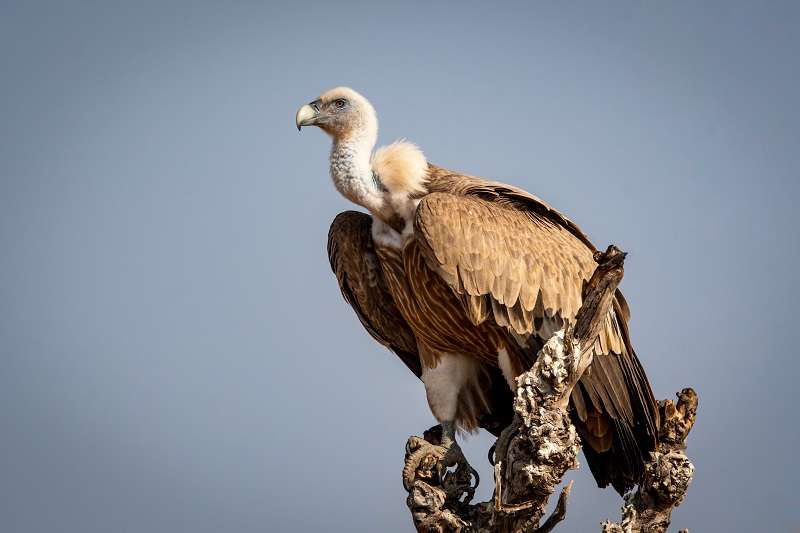
Eurasian Griffon Vulture
A Face Only a Mother Could Love?
Vultures may not be considered beautiful by most, but they play a vital role in the ecosystem. They are truly the garbage men and recycling team of nature.
They help prevent diseases from being spread by dead animals by stripping the carcass prey quickly and efficiently. It’s a dirty job, but someone’s gotta do it!
King Vulture
I’ve been very lucky in my travels to see a variety of vultures; from common Turkey and Black Vultures in North America to South America’s Andean Condor and the rare Griffon Vulture soaring high above the steep cliffs on the Mediterranean island of Sardinia. I personally consider vultures to be endlessly fascinating in their habits and lifestyles. My favorite vulture that I’ve seen in the wild has got to be the strikingly marked white, black and orange-colored King Vulture of Central America.
The King Vulture is a New World Vulture, distinguishable from other vulture species by their bright colors.
Their uniquely colorful appearance boasts white, yellow, orange, red, and purple. They average around 2.5 feet tall and can weigh up to 8 lbs. Both males and females have a caruncle, a fleshy wattle similar to those of turkeys, on their beaks.
Mayan legend suggests the King Vulture was a carrier of messages between humans and the Gods.
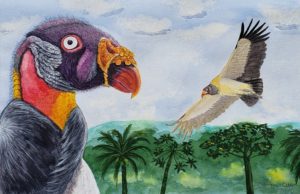
King Vulture painting by Christine Elder
The California Condor
California Condors are a type of vulture that was once widespread throughout North America, but the species is now restricted to California and a few other states where they have been reintroduced.
According to the Ventana Wildlife Society, “California Condors have bounced back from a low of only 22 captive individuals in 1987. Thanks to breeding and release programs, these majestic scavengers are now pairing up and breeding in the wild, and intensive nest management programs are helping to ensure that their wild chicks have the best chance of survival. As of August, 2020, the total population included 173 in captive breeding programs and 312 birds flying free in the wild!”
- They may look scary, but California Condors are not predators; they are strictly scavengers that feed on dead animals. They can consume up to 4 pounds of food and then go several days before their next meal.
- The California Condor was at the brink of extinction around 35 years ago. However, through heroic conservation efforts, they’ve made an impressive comeback.
Learn more about the California Condor
- Website of the San Diego Zoo; the first facility in the world to hatch a condor egg.
- Watch replays of a live webcam of a condor nest with chicks.
The Andean Condor
The Andean Condor resides in South America, as its name suggests. It is the national symbol of Argentina, Bolivia, Chile, Colombia, Ecuador, and Peru. Adorned with black and white feathers, they are the largest flying birds in the world. They can weigh up to 33 pounds with an impressive 10 ft wingspan.
They’re also one of the longest-living birds, sometimes exceeding 70 years! However, these condors are threatened by habitat loss and persecution by farmers under the misconception that they are a threat to livestock. Education and captive breeding programs have been underway since the late 1980s, but they reproduce very slowly and populations are still decreasing.
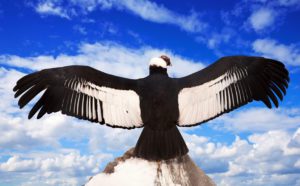
The Griffon Vulture
Griffon Vultures have a wide range, living in the mountainous regions of Southern Europe, North Africa, and Asia.
The Griffon Vulture is typically brown or black with a white underbelly and collar. They average about 3.5 feet tall. Can you spot the excellently camouflaged Griffon Vultures on this cliff below?
We had a challenging time doing so, even when viewed through a spotting scope since they were so high above us on the coast of Sardinia and their forms blended so perfectly with the gray granite rocks and the tawny lichens.
These Old World Vultures died out in many areas due to poisoning, lack of food, getting caught in electrical lines, habitat disturbance, and even shooting and egg robbing. But thanks to strong conservation efforts, these vultures have been reintroduced in many of these areas and worldwide populations are on the rise.
Why Many Vultures are Endangered
Tragically, these majestic birds are now in steep decline worldwide due to hunting, pesticides, poisoning, and collisions with wind turbines and high-power lines. According to a study conducted in 2016, 9 out of 22 vulture species are critically endangered.
Many species of vultures are rapidly declining and some are even facing extinction. In South Asia, residues of a veterinary drug called Diclofenac has been banned after it was found to be the cause of numerous vulture deaths. However, this action was not taken in a timely manner and it is unclear if the vultures will ever make a full comeback there.
In Central Africa, efforts are being made to save vulture populations, which sharply declined due to the bushmeat trade, as well as intentional and unintentional poisoning. The Hooded Vulture (pictured below) is an example of an African species that is listed as ‘critically endangered’.
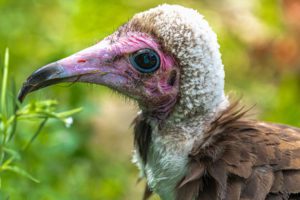
Hooded Vulture
Cool Facts About Vultures
- The vulture has few predators. Its most common defensive tactic is to hurl projectile vomit at his adversary and fly away.
- Vultures can digest meat in any stage of decay, and withstand diseases that would kill any other creature.
- Vultures urinate to cool off (they lack sweat glands) and to disinfect their legs. Vulture urine kills any germs picked up while walking through a carcass.
- Their head is bald, making it difficult for bacteria to stick to them when probing for flesh deep inside a carcass. What little bacteria remains on their bald head gets baked off in the sun.
- Vultures were once regarded as largely beneficial and were well-tolerated in human-populated areas. A negative attitude toward these scavengers was developed in the early 1900s when people became concerned that vultures might increase the spread of disease, despite strong evidence to the contrary.
- In Africa, witch doctors grind down vulture brains for the magic they are believed to possess.
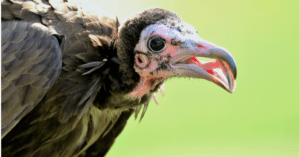
Learn More About Vultures
You can learn more about vultures and the many threats they face in “Why Africa’s Vultures Are Collapsing Toward Extinction” on the National Geographic website.
- International Vulture Awareness Day website: lots of educational resources and downloadable materials.
- All About Eqyptian Vultures and How to Sketch Them
- Vulture Conservation Foundation
- Vulpro (Vulture Conservation Project
- Vulture Conservancy
- SAVE (Saving Asia’s Vultures from Extinction)
- Ventana Wildlife Society’s California Condor Recovery Program.
- BirdLife International
- Wildlife Conservation Society Vulture Programs
- Wildlife Conservation Society Condor Programs
- African Wildlife Foundation
- Tswalu Kalahari Vulture Safe Zone
- International Union for the Conservation of Nature
- Fauna and Flora International
- The Peregrine Fund California Condor Conservation
- Tusk Vulture Conservation Project
- Cheyenne Mountain Zoo African Vulture Conservation
- San Diego Zoo Wildlife Alliance
- Science News: Vultures are vulnerable to extinction
Books About Vultures
- Vulture: The Private Life of an Unloved Bird by Katie Fallon
- Vulture by Thom Van Dooren
- Vulture: Nature’s Ghastly Gourmet by Wayne Grady
Movies About Vultures
Vultures: Kings of the Dead
A kid-friendly yet educational video that provides a great overview of the vultures of the world. Hosted by super cool paleo-science illustrator, Danielle Dufault.
Video: Why I love vultures: TED talk by raptor biologist Munir Virani.
Now that you know a little more about vultures, I hope you’ve discovered how fascinating they are and gained some appreciation for the vital roles they play in the ecosystems they inhabit. If you liked this story, please share it with others!
More Bird Resources on this Website
Here are some more stories, videos, and bird sketching resources I’ve written in the past.
- My Costa Rica Birding Big (sketching) Day
- Tips for Sketching Birds
- Celebrate Vultures
- How to Draw Hummingbirds (video)
- Identifying Warblers in the Spring
- John James Audubon
- The American Dipper
- Autumnal Recrudescence
- A Black-headed Grosbeak Nest (video)
- Kid’s Bird Coloring Pages
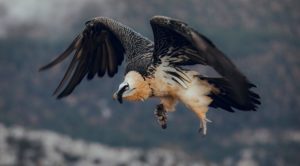
Bearded Vulture / Lammergeier



